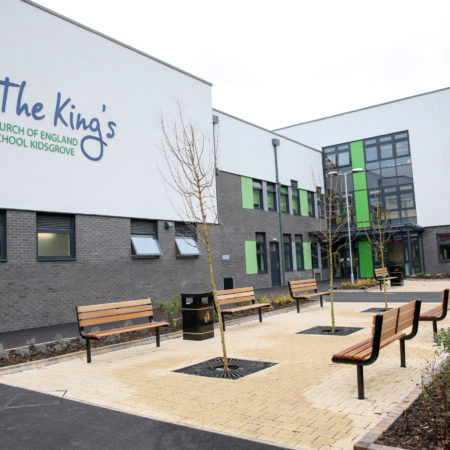How Panelised Systems Simplify More than Just the Build Phase
The ability of panelised offsite building systems to accelerate the overall build programme is well known. The building superstructure is fabricated in parallel with site preparation and groundworks and the structure is assembled more rapidly than conventional brick and blockwork methods.
Additionally, the dry structure is completed at an earlier stage to allow follow-on trades to start work. For school building programmes that must be completed to tight schedules, these are significant advantages.
What’s maybe less well understood is how panelised building systems also simplify specification, design and compliance.
Collaborative Design
The offsite approach allows manufacturers to collaborate closely with designers and architects to create standardised building elements and configurations. These can then be selected from a digital catalogue and adapted to the needs of each new project.
This is not only a simpler and more efficient process than designing from scratch, there’s also a direct digital connection to the manufacturing and construction phase. In everyday terms this means you don’t have an engineer onsite looking at a set of drawings and wondering how on earth the design can be delivered in practice.
‘Off the Shelf’ Specification
Specification, whether it’s for thermal, acoustic or fire performance is also simplified. These properties are built into the panels and certified. Meeting a specific need can be as simple as selecting the panel thickness or surface treatment.
With conventional construction, specifying and delivering thermal performance in practice is more complicated. For one thing, brick and blockwork walls are not homogenous.
Cement mortar has a lower U value than blocks and bricks – so the percentage of mortar in the wall can affect real world performance and could lead to thermal bridging losses and a non-compliant structure. Compliance with thermal performance specifications also relies on insulation being correctly installed onsite, rather than being integrated into the panels in a controlled factory environment.
Managing Interfaces
Interfaces also lead to compliance vulnerabilities. Again, with the panelised system these are all carefully modelled to eliminate thermal bridging and guarantee the specified level of air permeability.
This is a quick summary to explain how design, specification and compliance form a closed and controllable loop when you adopt a panelised building system. This is a major benefit for school building programmes where performance, efficiency and on-time delivery are so crucial.
You can discover more by contacting Caroline Compton-James ([email protected]) or visiting our resource centre.

